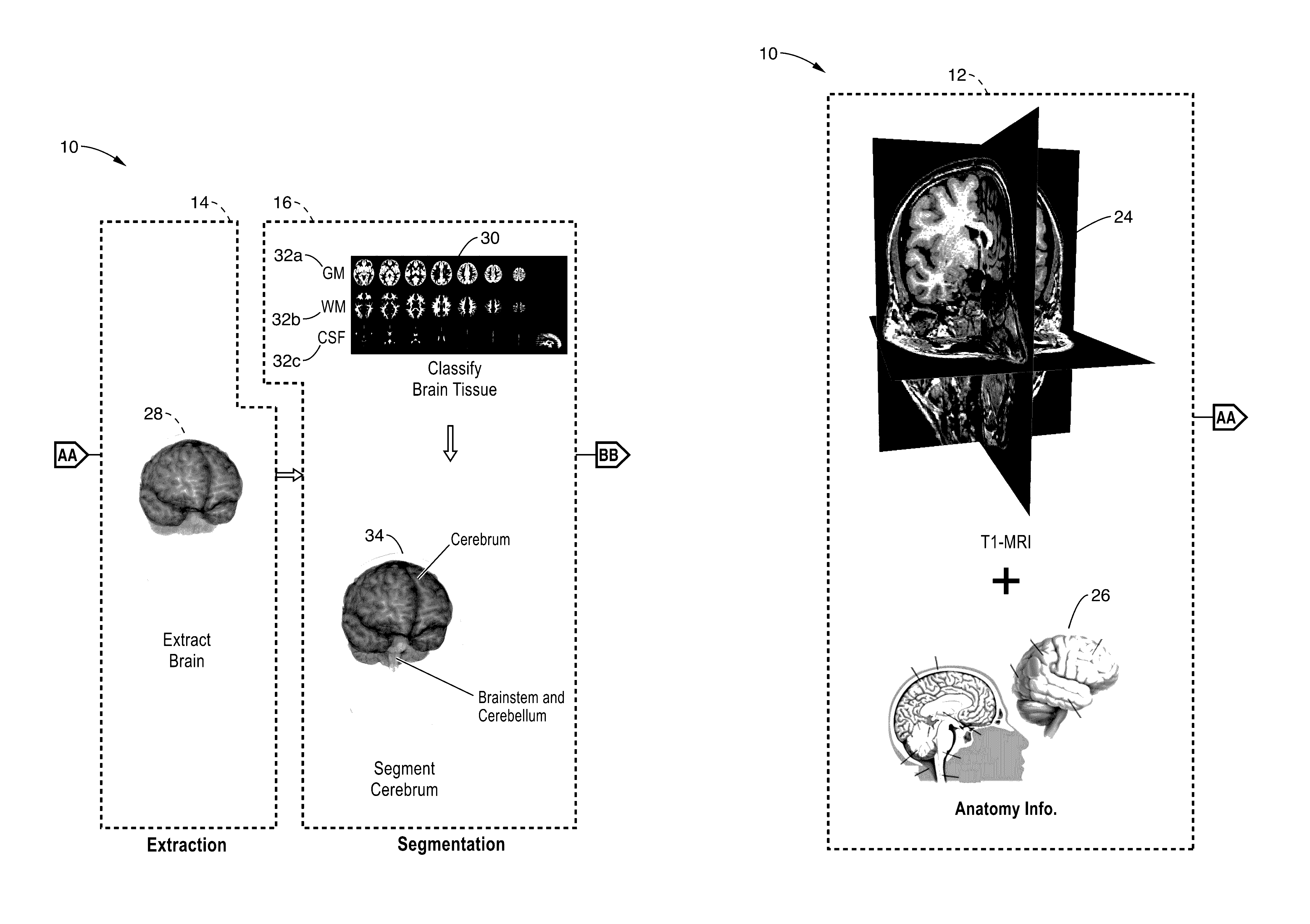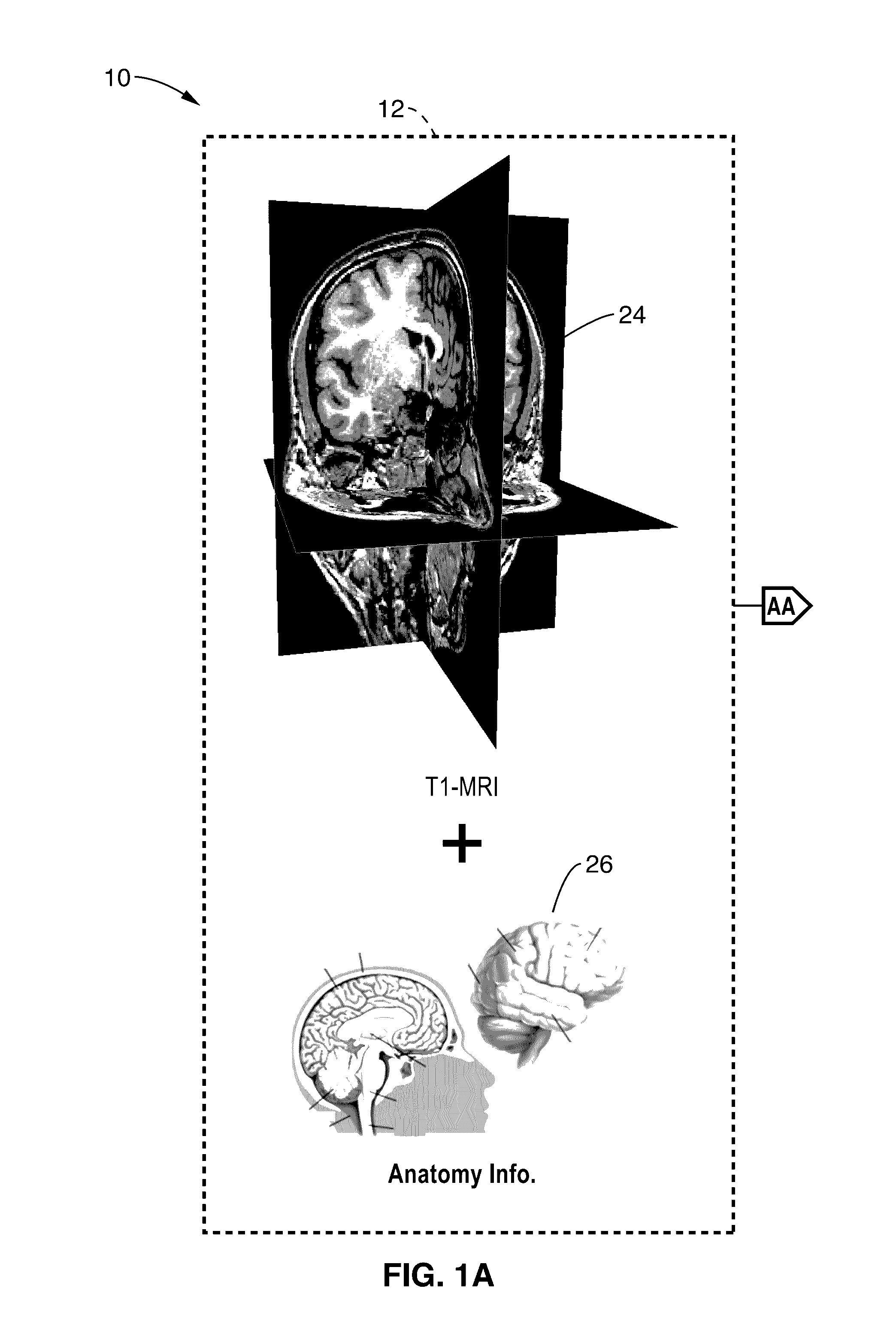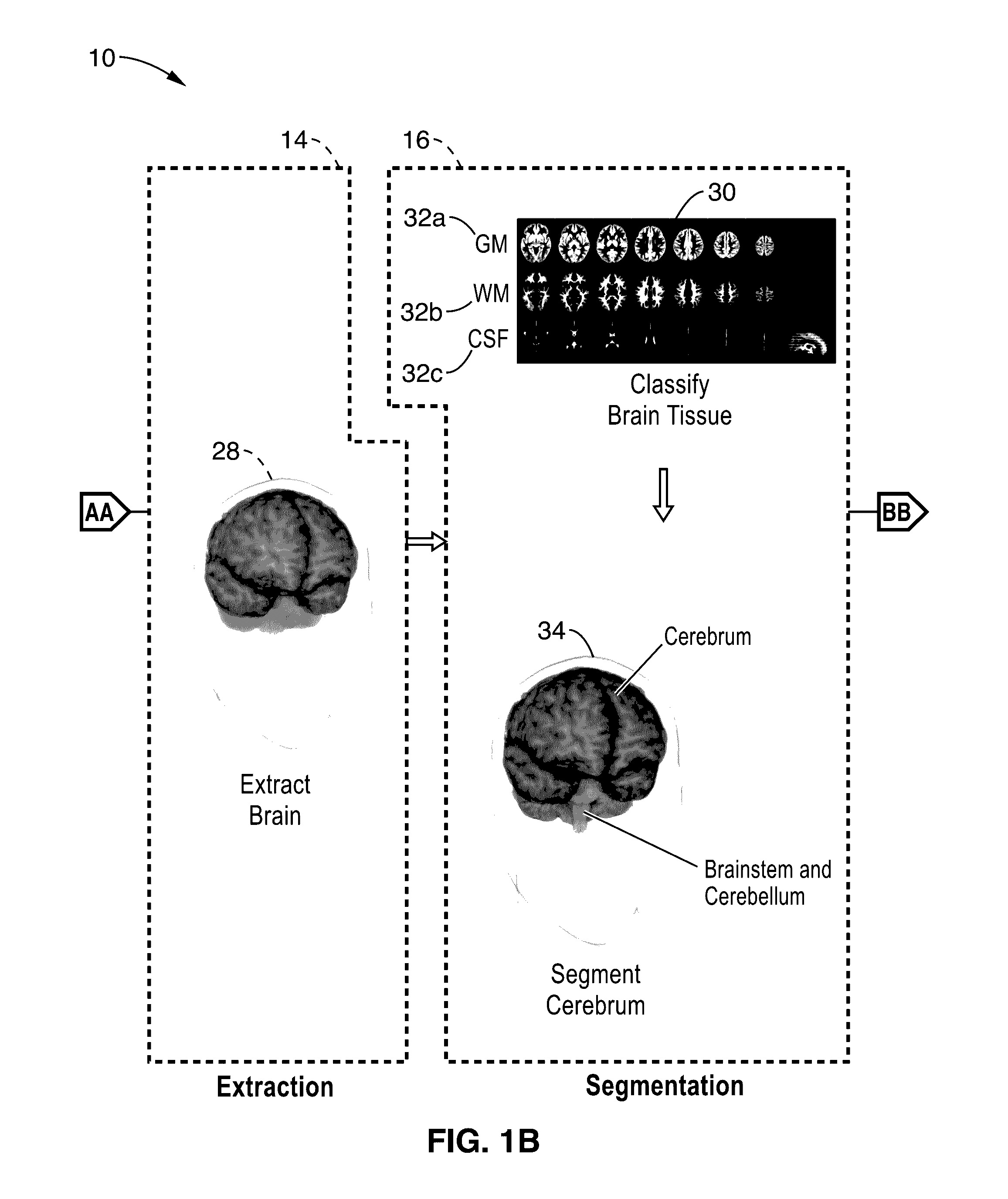Automatic 3D segmentation and cortical surfaces reconstruction from t1 MRI
a technology of cortical surfaces and 3d segmentation, applied in the field of medical imaging, can solve problems such as requiring significant processing and generally requiring more than twenty hours
- Summary
- Abstract
- Description
- Claims
- Application Information
AI Technical Summary
Benefits of technology
Problems solved by technology
Method used
Image
Examples
Embodiment Construction
[0026]This disclosure addresses the problem of segmentation and reconstruction of cortical surfaces, including reconstructing both inner-surfaces and outer-surfaces of the cortex. The outer-surface is the pial surface, hereafter referred to Gray Matter (GM) surface. The inner-surface is gray-white boundary, hereafter referred to White Matter (WM) surface. The reconstruction of the cortical surfaces is a complex procedure which is broken into a number of subtasks.
[0027]FIG. 1A through FIG. 1D illustrate an example embodiment 10 of automatic 3D segmentation and cortical surfaces reconstruction process from T1-MRI data. The process is shown in principle steps of receiving input information 12, extraction 14, segmentation 16, anatomical refinement 18, reconstruction 20, and output 22.
[0028]In FIG. 1A raw brain MRI data 24 is received from an MRI machine, with additional anatomical information 26 received, such as from a database. Extraction processing 14 commences in FIG. 1B to remove n...
PUM
 Login to View More
Login to View More Abstract
Description
Claims
Application Information
 Login to View More
Login to View More - R&D
- Intellectual Property
- Life Sciences
- Materials
- Tech Scout
- Unparalleled Data Quality
- Higher Quality Content
- 60% Fewer Hallucinations
Browse by: Latest US Patents, China's latest patents, Technical Efficacy Thesaurus, Application Domain, Technology Topic, Popular Technical Reports.
© 2025 PatSnap. All rights reserved.Legal|Privacy policy|Modern Slavery Act Transparency Statement|Sitemap|About US| Contact US: help@patsnap.com



